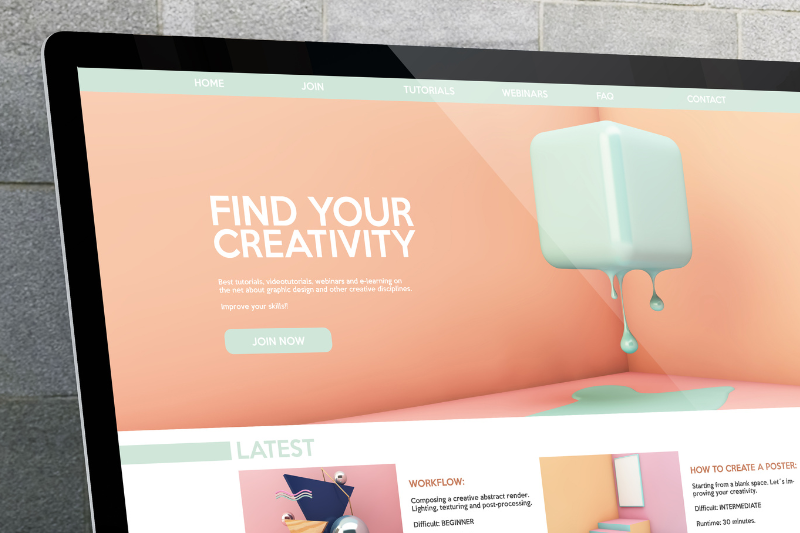Are you seeing traffic on your website but not enough conversions? Your web design might be holding you back. Let’s explore 11 essential web design principles that can help boost your conversion rate in 2024.
1. Clear and Concise Copywriting
In a fast-paced digital world, users skim rather than read every word. That’s why clear, concise copy is crucial for converting visitors into customers.
Actionable Strategy
- Write value-driven headlines: Use clear, benefit-focused headlines like, “Find Your Perfect Website Design Solutions Here” rather than generic greetings.
- Break up content: Organise text into short paragraphs, subheadings, and bullet points to enhance readability and user experience.
- Avoid jargon: Keep language simple and accessible to foster trust.

2. Effective Call-to-Action (CTA) Optimisation
A well-crafted CTA can drive user action. However, many websites fail by placing CTAs that blend into the design or using vague language.
Actionable Strategy
- A/B test your CTAs: Experiment with different CTA styles to identify which resonates best with your audience.
- Use action-oriented language: Phrases like “Get Your Free Quote” or “Shop Now” encourage users to act immediately.
- Place CTAs strategically: Position CTAs where users naturally look, such as near product descriptions or at the end of blog posts.
3. Page Speed Optimization
Page speed is critical for conversion rates. Slow websites lead to higher bounce rates—53% of mobile users abandon a site if it takes longer than 3 seconds to load.
Actionable Strategy
- Compress images: Use tools like TinyPNG to reduce image sizes without compromising quality.
- Implement lazy loading: Load images and videos as users scroll to reduce initial load times.
- Minify JavaScript and CSS files: Minimise and combine these files to boost speed.

4. Mobile-Friendly Web Design
With mobile traffic surpassing desktop traffic, responsive web design is essential. A seamless mobile experience can make or break your conversion rates.
Actionable Strategy
- Use responsive frameworks: Tools like Bootstrap ensure your design adjusts across devices.
- Make buttons tappable: Buttons should be easily clickable, around 44×44 pixels, especially on mobile.
- Test with Google’s Mobile-Friendly Test: Use this tool to analyse and optimise your mobile user experience.
5. Consistent Branding Across Pages
Consistency in branding builds trust, which directly influences conversions. Disjointed fonts, colours, or messaging can confuse users and erode trust.
Actionable Strategy
- Create a brand style guide: Ensure uniform fonts, colours, and design elements across all pages.
- Use consistent messaging: Maintain a consistent tone and style to reinforce your brand identity.
6. Simplified User Navigation
Overcomplicated navigation can confuse visitors, leading to a poor user experience and higher bounce rates. Simplified navigation guides users smoothly toward conversions.
Actionable Strategy
- Use clear menu labels: Instead of “Our Services,” use specific labels like “Web Design Services” to guide users.
- Limit menu items: Aim for 5-7 main navigation items to avoid overwhelming visitors.
- Test navigation with real users: Tools like UsabilityHub can help identify navigation issues.
7. Trust-Building Elements
Trust is vital for conversion, especially in a digital environment where scams are common. Without trust signals, users may hesitate to provide personal information or make purchases.
Actionable Strategy
- Display reviews and testimonials: Feature customer reviews prominently to build credibility.
- Highlight security badges: Display SSL certificates and secure payment badges to reassure users.
- Showcase clear return policies: Highlighting money-back guarantees or return policies can reduce purchasing hesitation.

8. Use of Compelling Visuals
Visuals play a critical role in capturing attention and communicating messages quickly. However, poor-quality or irrelevant visuals can harm your brand’s credibility.
Actionable Strategy:
- Invest in high-quality visuals: Use custom graphics or professional photography instead of low-quality stock images.
- Use visuals to highlight key content: Place visuals next to CTAs or product descriptions to draw attention.
- Avoid generic stock images: Where possible, opt for unique visuals that reflect your brand’s personality.
9. Personalisation of User Experience
Consumers expect personalised experiences. Websites that cater to individual preferences can significantly boost engagement and conversions.
Actionable Strategy:
- Leverage behavioural data: Use tools like Google Analytics to personalise user experiences based on browsing history.
- Offer personalised recommendations: Show personalised offers or products to returning visitors.
- Implement dynamic content: Adjust content based on user behaviour to create tailored experiences.
10. Data-Driven Design Decisions
Designing based on guesswork won’t yield the best results. Data-driven design uses user behaviour insights to optimise websites for conversions.
Actionable Strategy:
- Implement heatmaps: Tools like Hotjar reveal where users click and interact the most.
- Conduct A/B testing: Test different elements, like CTA placements or product layouts, to determine what works best.
- Use session recordings: Tools like FullStory show real-time user behaviour, allowing you to identify pain points.
11. Simplified Forms to Reduce Friction
Complex, lengthy forms can deter users from completing actions. By simplifying your forms, you can reduce friction and boost conversions.
Actionable Strategy:
- Ask only for essential information: Shorten forms by collecting only what’s necessary.
- Use multi-step forms: Break long forms into manageable steps to make the process feel less overwhelming.
- Test form length: Experiment with different form lengths to find the sweet spot for gathering information while minimising drop-offs.
Conclusion
Applying these 11 web design principles can significantly boost your conversion rate in 2024. Whether it’s improving CTA optimisation, enhancing page speed, or simplifying forms, these strategies will help transform your website into a powerful conversion tool.
Ready to get started? Conduct an audit of your current site and implement these strategies. For expert assistance, consider reaching out to a professional website design company that specialises in business website design and conversion rate optimisation.






